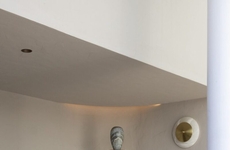
Vollebak Launches its Minerals Collection with Mineral Dyes
References: vollebak & designtaxi
British fashion imprint Vollebak launches its new Minerals collection that brings forth a prehistoric influence using captivating mineral dyes for the clothing. This includes celadonite, hematite, volcanic soil, and ochre. Caldonite is created by joining both seawaters with lava to create a soft seafoam green.
Ochre creates a mustard-like yellow, which is notably one of the oldest pigments in the world. Hematite is derived from the Greek word for blood and is named after the primary iron source. To create the new collection, the minerals were sourced to be turned into a bath where the apparel was left to soak. Overall, the Minerals collection is made up of tees, sweaters, and sweatpants -- all of which are detailed with soft ancient tones.
Image Credit: Vollebak
Ochre creates a mustard-like yellow, which is notably one of the oldest pigments in the world. Hematite is derived from the Greek word for blood and is named after the primary iron source. To create the new collection, the minerals were sourced to be turned into a bath where the apparel was left to soak. Overall, the Minerals collection is made up of tees, sweaters, and sweatpants -- all of which are detailed with soft ancient tones.
Image Credit: Vollebak
Trend Themes
1. Mineral-dyed Clothing - The use of natural mineral dyes in fashion presents an opportunity for sustainable and eco-friendly production practices.
2. Prehistoric-inspired Fashion - The use of minerals in fashion allows for unique and captivating designs inspired by Earth's natural history.
3. Soft Toned Clothing - The use of mineral dyes for clothing creates a unique color palette with soft, muted tones that can be applied in a variety of apparel styles.
Industry Implications
1. Fashion - Fashion brands can incorporate natural mineral dyes and prehistoric influences in their designs, promoting sustainability and unique offerings in the market.
2. Sustainable Manufacturing - The use of natural mineral dyes can disrupt traditional manufacturing practices, allowing for sustainable and environmentally-friendly production processes that can be applied in various industries beyond fashion.
3. Textile Production - Incorporating natural mineral dyes opens opportunities for the textile industry to create unique, eco-friendly products with a focus on natural ingredients.
3.5
Score
Popularity
Activity
Freshness
























